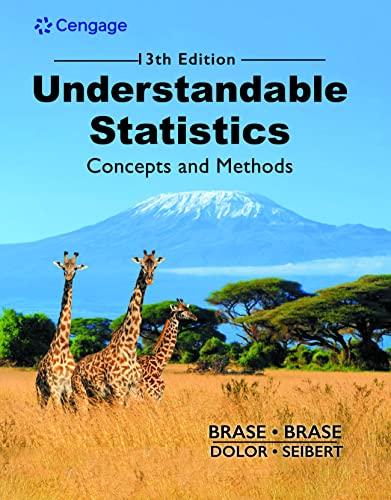Expand Your Knowledge: Plus Four Confidence Interval for a Single Proportion One of the technical difficulties that
Question:
Expand Your Knowledge: Plus Four Confidence Interval for a Single Proportion One of the technical difficulties that arises in the computation of confidence intervals for a single proportion is that the exact formula for the maximal margin of error requires knowledge of the population proportion of success p. Since p is usually not known, we use the sample estimate pˆ 5r /n in place of p. As discussed in the article
“How Much Confidence Should You Have in Binomial Confidence Intervals?” appearing in issue no. 45 of the magazine STATS (a publication of the American Statistical Association), use of pˆ as an estimate for p means that the actual confidence level for the intervals may in fact be smaller than the specified level
c. This problem arises even when n is large, especially if p is not near 1/2.
A simple adjustment to the formula for the confidence intervals is the plus four estimate, first suggested by Edwin Bidwell Wilson in 1927. It is also called the Agresti–Coull confidence interval.
This adjustment works best for 95% confidence intervals.
The plus four adjustment has us add two successes and two failures to the sample data. This means that r, the number of successes, is increased by 2, and n, the sample size, is increased by 4. We use the symbol p, read “p tilde,” for the resulting sample estimate of p. So, p 5(r 1 2)/(n 1 4).
(a) Consider a random sample of 50 trials with 20 successes. Compute a 95% confidence interval for p using the plus four method.
(b) Compute a traditional 95% confidence interval for p using a random sample of 50 trials with 20 successes.
(c) Compare the lengths of the intervals obtained using the two methods. Is the point estimate closer to 1/2 when using the plus four method?
Is the margin of error smaller when using the plus four method?
AppendixLO1
Step by Step Answer:

Understandable Statistics Concepts And Methods
ISBN: 9780357719176
13th Edition
Authors: Charles Henry Brase, Corrinne Pellillo Brase





